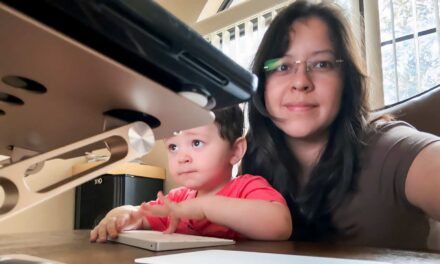
Beyond the full metal jacket: Searching for lighter, stronger aircraft materials
April 16, 2007
On January 25, 2007, three crew members and 50 passengers boarded a Mesa Airlines flight in Denver bound for Phoenix. Fifteen minutes into the flight, and about 60 miles away from Denver International Airport, the jetliner was 24,000 feet above the Rocky Mountains when there was a sudden loud bang.
Crew and passengers remember being jolted and thinking that something had hit the plane. Minutes later the crew confirmed that the aircraft had lost one of its engines. The pilots made an emergency return to Denver.
To the surprise of the crew, the Federal Aviation Administration (FAA) and the U.S. National Transportation Safety Board (NTSB), the jet returned safely. On the ground, inspectors discovered that the airplane had lost a fan blade, which had caused damage to the engine on the left wing.
In theory, the incident should have never happened. As a part of the FAA’s aircraft engine certification regulations, an engine must demonstrate the ability to contain a broken fan blade, released at the maximum possible engine speed. Because of the extensive pre and post-test analysis, and the fact that equipment is unusable after testing, the Fan Blade Out (FBO) test can cost up to $20 million.
And, so, in its mission to improve engine containment systems, the FAA has employed the help of university researchers and the aerospace industry to develop cheaper, more sophisticated testing techniques that employ computer-based modeling and simulation.
Arizona State University engineering professor Subramaniam Rajan has been working for six years on a collaborative FAA-funded research project addressing the effectiveness of materials used in aircraft containment systems. Rajan and co-principal investigator Barzin Mobasher, also a professor in the Department of Civil and Environmental Engineering in the Ira A. Fulton School of Engineering, have been working with Honeywell Engines in Phoenix, the National Aeronautics and Space Administration’s Glenn Research Center, and the nonprofit research institute SRI International since 2000. In 2006, the FAA renewed its funding of the project with a $375,000 grant to continue the research until 2008.
ASU’s role in the effort is to develop an accurate material model of energy-absorbing materials (such as Kevlar and Zylon) to be used in designs of engine fan blade containment systems. The objective is to ensure that blades and blade fragments are contained within the engine and prevent release of high energy uncontained debris that could damage an aircraft.
Developing a material model involves testing the material in the laboratory to find its properties, which are then used to describe the material behavior in a computer simulation. In a typical computer simulation, the containment system and the engine components are modeled. Assuming that the engine is at full throttle, an engine component (such as a fan blade) is deliberately broken off and the computer simulation then predicts if the broken engine components will be contained inside the engine.
“The potential savings both in terms of time and energy required to design the containment system and the accuracy in predicting how engines would react to these events is invaluable,” says Rajan. “Honeywell and other engine manufacturers estimate savings of millions of dollars by carrying out these virtual tests instead of full-scale engine tests.”
In addition to being a more economical way of testing, computer-assisted modeling and simulation allows researchers to test of a broad range of blade release conditions, providing a much better understanding of the containment system capability than is currently gained through the one single pass/fail engine test.
The results of this work will be used by FAA and Industry Engineers to develop safer engine containment designs and to streamline the engine manufacturer’s path to final certification demonstration tests.
In another research project funded by the Army Research Office (ARO), Rajan is using his expertise in systems design and impact mitigation to aid the U.S. Army’s effort to create a leaner, more sophisticated military force. A prerequisite of this goal is to make equipment lighter, but more resistant to damage.
A three-year, $300,000 grant from the ARO has paired up Penn State University researchers and Rajan under the ARO’s Solid Mechanics Program to develop new materials and material placement schemes for military equipment such as armored vehicles and helicopters. Rajan and his collaborators will create composites from fabrics and metals, seeking a resilient pairing that will protect military personnel from gunfire and explosions.
Using a computer-based analysis, Rajan will attempt to identify the ideal formulation of material size, shape and placement on equipment (such as an armored tank), testing the combinations under a wide variety of environmental conditions. Rajan is the director of the Computational Mechanics Lab, which has computing clusters to carry out parallel computations involved in the research.
There are simpler ways to make military equipment more durable, says Rajan.
“The Army could use twice the amount of metal on the outside of their vehicles, making them extremely resistant to damage,” he says. “The downside to that solution is the weight of the vehicle, which would increase its fuel consumption and make it difficult to maneuver.”
The search for lighter, more technologically advanced materials is a complex one.
“There is no magic bullet solution,” says Rajan. “Modern materials can be devised, but knowing how to make it, what shape it needs to be in and where to place it — those are your $60 million questions.”


































